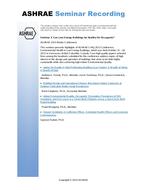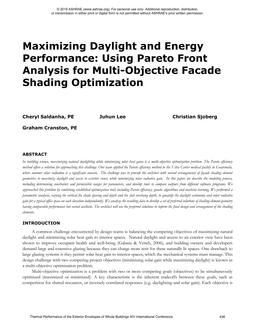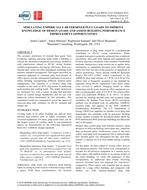Next-generation ventilation should explicitly aim to aggregate, compare, weight, and ultimately integrate ventilation’s numerous impacts, which include thedilution of multiple indoor pollutants, introduction of multiple outdoor pollutants, direct correlations to productivity and absenteeism, and strong influenceson energy consumption, peak power demand, and their associated environmental impacts. We propose a multi-criteria decision-making framework basedon (i) a comprehensive, scientific accounting of the costs and benefits of ventilation, and (ii) a loss minimization formulation to allow both expression ofuser preferences and adjustment for uncertainty. A loss function can provide the core criterion for more holistic ventilation, and facilitate intelligentdynamic control that exploits new opportunities presented by increased interconnectivity and advances in control and sensing of buildings. We firstformulate a proposed loss function, given the current state of the art knowledge on multiple ventilation impacts, and develop distributions of impact pricesto represent (and inform) user preferences. We then explore the components, implications, and dependencies of the loss function by applying it to anexisting simulation-based dataset of daily ventilation, energy consumption, and pollution exposure data resulting from nine off-the-shelf ventilationstrategies that combined economizing, demand-controlled ventilation, and supply air temperature reset. In terms of total magnitude, particulate matterhealth impacts and productivity were dominant, followed by absenteeism and ozone exposure losses. Additional analysis of how impacts responded toventilation, however, indicated productivity to be by far the most important ventilation-affected impact, followed by absenteeism losses (about a third aslarge per ventilation change), indoor exposure to outdoor pollutants (an order of magnitude lower), and electricity and natural gas costs (two and threeorders lower, respectively). The results suggested that, for energy to play a serious role even occasionally, productivity prices would need to be reduced at leasta factor of ten, or utility prices increased tenfold. Finally, selection of loss-minimizing ventilation rates, among the available options, yielded ventilationthat was, in the mean, three to four times as great as the current minimum standards. The building parameters that most influenced the loss-minimizingrates were occupant density, the infiltration rate, the price of productivity, and outdoor air enthalpy. Building envelope parameters, HVAC systemefficiencies, and day start and end times all had insignificant or negligible impact on the selection of the daily average loss-minimizing ventilation rate.
Citation: ASHRAE and AIVC IAQ 2016 Conf
Product Details
- Published:
- 2016
- Number of Pages:
- 8
- Units of Measure:
- Dual
- File Size:
- 1 file , 2.9 MB
- Product Code(s):
- D-2016IAQ-19


